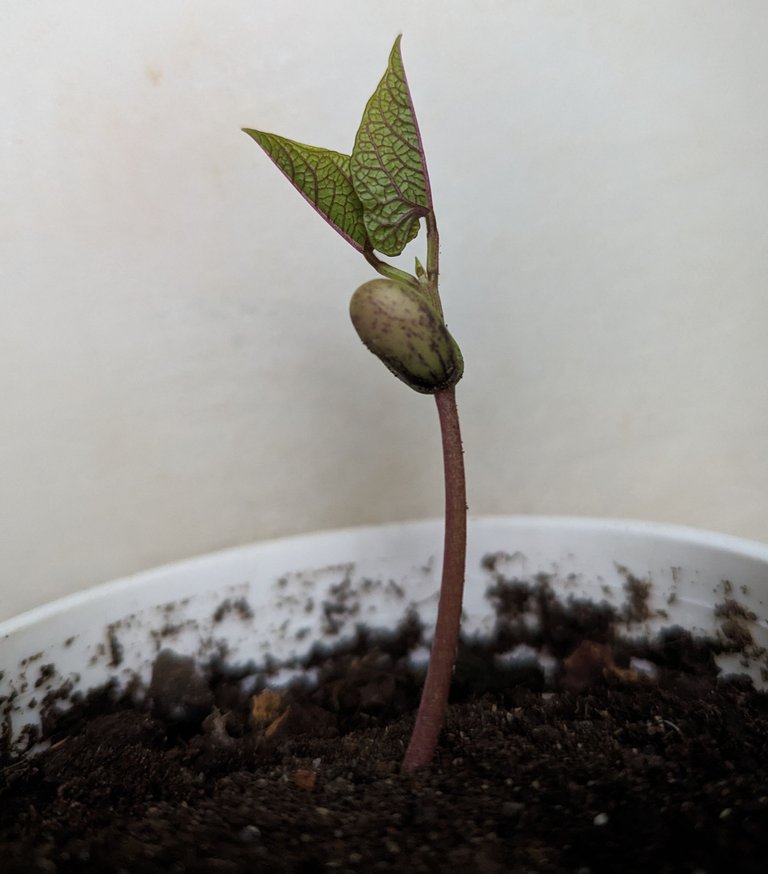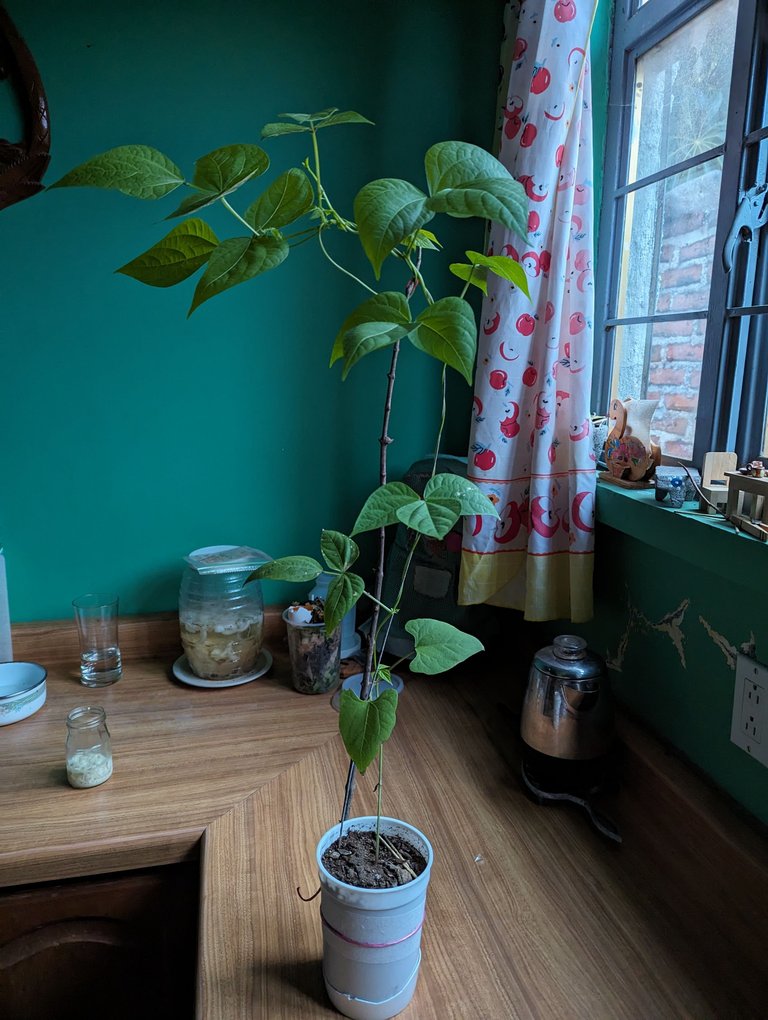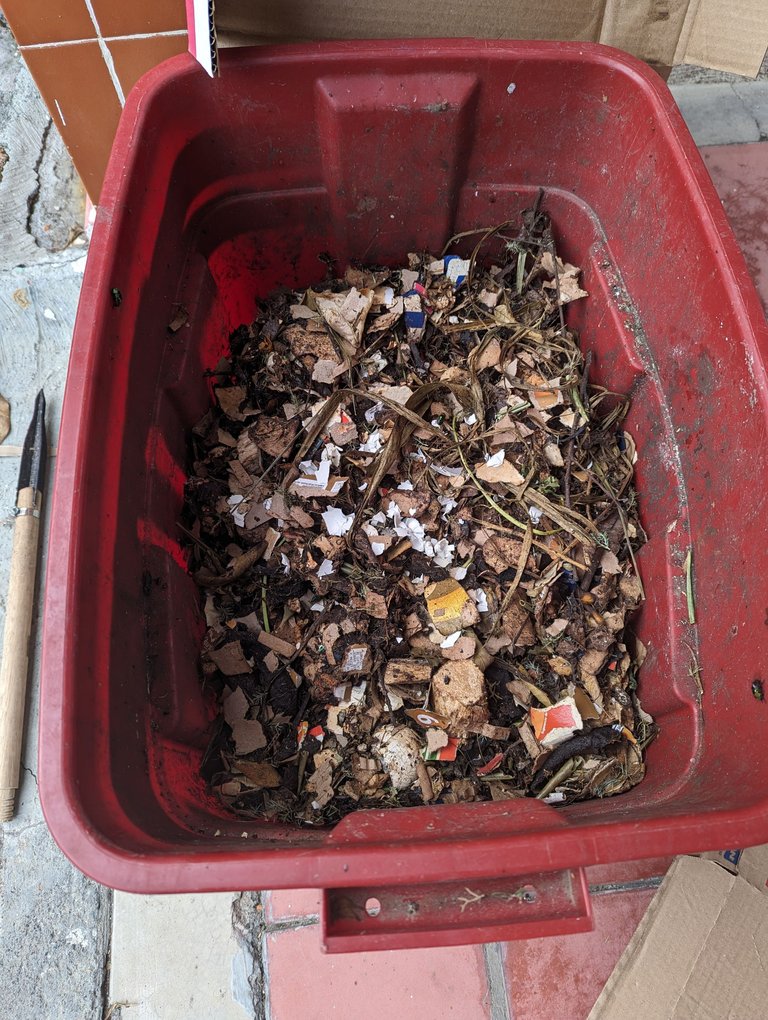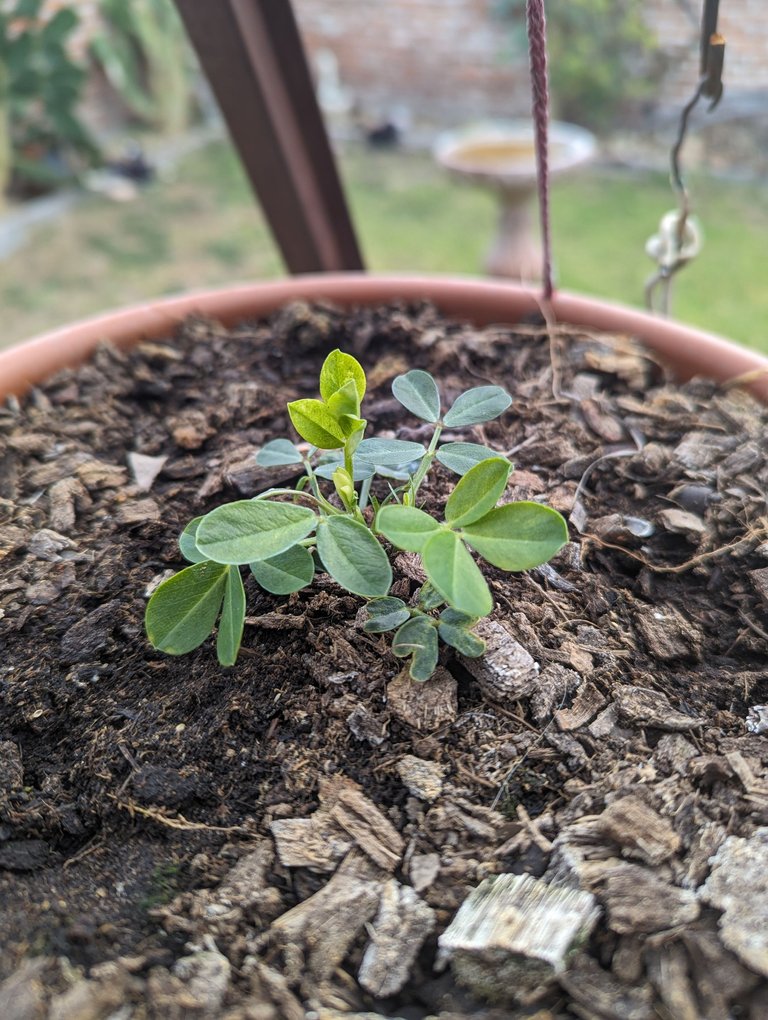I think it's rather fitting that my first post of the year be about the garden! With my summer job diverting most of my attention away from my home garden and then returning to my fatherland soon after, you all saw me and my garden very little.
Being here just under 3 months does not really allow me to cultivate much of anything and see it to fruition (no pun intended), but I did what I could. And you all should know that I absolutely love legumes.
One of the first seeds I planted when I got here was a black pinto bean. How do I know it is in fact a pinto bean and not a black-type bean, you ask? Well, it was found among normal pinto beans. That doesn't say much, but it's a start. Also, as observed in the past, when soaked in water the seed coat coloring fades a bit and reveals the pinto markings!

Even the cotyledons emerged pinto where normal black beans are pale. And here you can see the color even in the veins of the first leaves; it is not truly black but in fact an intensely deep purple.

Today, the plant exhibits none of this color. However, it might return in the blossoms. I don't know since all my other black pinto bean experiments have failed, including one right before this very plant. Sometimes they just don't geminate or if they do they die off early on before even developing the characteristic trifoliate leaves.
Pinto beans are supposed to be half pole type. In my experience, they grow into a small bush with a short, spindly vine. This is in contrast to true pole types which can grow up to and beyond 6ft.
My purple bean has been quite vigorous in growth, perhaps due to the larger container than I normally experiment with, or maybe that combined with higher quality soil... Who knows? But this caused me to do some I've never done to my poor bean plants: pruning. Yes, I've been pinching the growing tips that exceed the length of the stake. Naturally, this caused more to appear but now I think it might give up and switch gears into flower production.
I did some research on peanut cultivation and just before the flowering stage, they benefit from calcium fertilizer. I decided to apply this knowledge to my bean because, after all, how different can legumes be?
I set aside some eggshells that normally would go straight to the compost bin.

I also learned that plants cannot readily take up calcium in this form but that it can be extracted with the acidic power of lime juice (limes sourced from our orchard, Terminal 5). The crushed shells and juice reacted quite similarly to vinegar and baking soda. When the bubbling stopped, I diluted the product with water and added some to the plant. I won't be here to see it fruit but hopefully I'll get to see some (purplish?) flowers.
The reason I researched peanuts was because I had a raw specimen here saved in my meager seed collection from seasons past. I soaked the two seeds from the single peanut and then kept them in a moist environment until they germinated. Then I planted them, after which they took over two weeks to break the soil surface, perhaps because of the colder weather and the fact that they are subtropical plants.

This is the more developed plant that broke the soil first. Unfortunately, I will not get to see the full life cycle of these either. Such a shame. I love the little golden pea blossoms.
When I return to my homeland, I will likely continue experimenting with my white pinto bean. Maybe I'll even mail off 20 specimens to get information on its genome. I remember visiting a website with this offer. I'll have to do more research and find this again.
Genetic experiments are fun. I almost feel like Gregor Mendel, the 19th century monk who pioneered genetics when he relentlessly studied the traits of pea plants!
On a side note, I must leave an offering of chocolate to the gnomes. I have not left anything in a while and maybe that's why the little gnome statue in front keeps ending up knocked over! Poor little guy...
